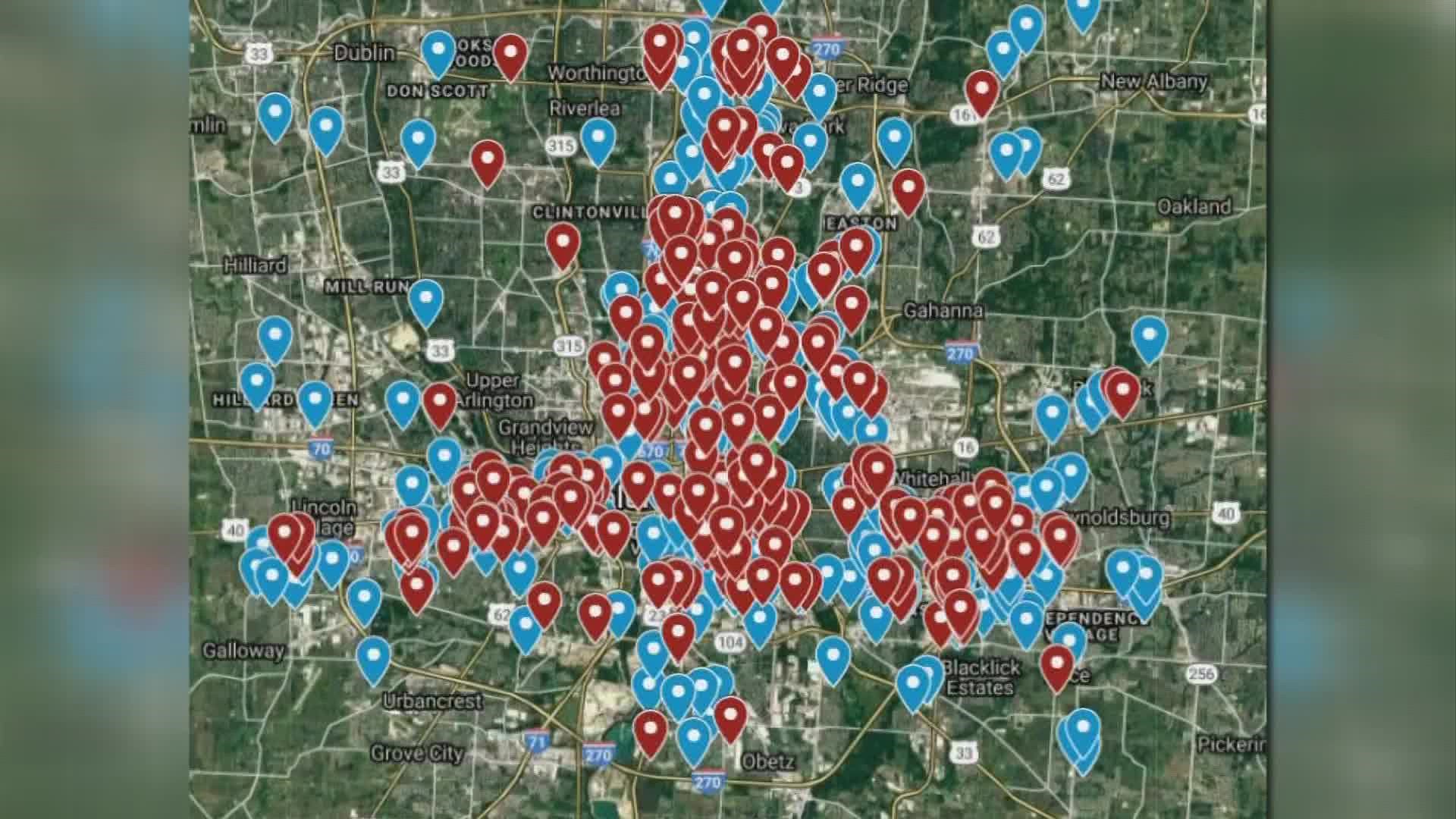10 Investigates discovers ‘no arrest deserts’ in Columbus where murders remain unsolved
Between 2017 and 2021, more than 300 murders have gone unsolved in Columbus. Some people believe a "no snitching" code in the streets is preventing justice.
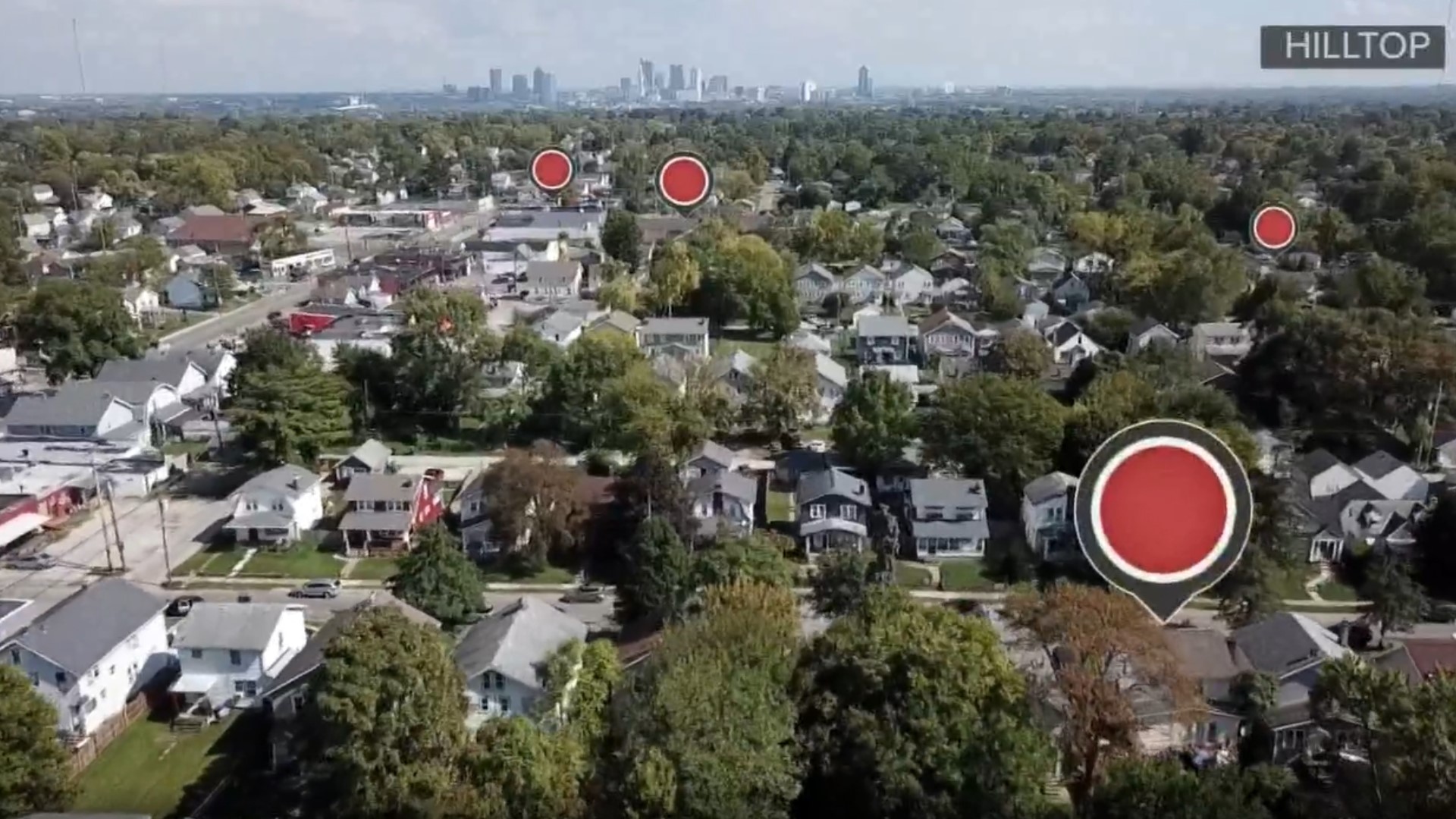
Brenda Johnson thinks people know who killed her son.
The hard part is getting them to talk to police.
“Nobody is going to talk if they think they’re next,” Johnson said. “There’s a lot of people out there who knows. I know they know. I know who knows but they won’t talk.”
Her 29-year old son, James Johnson, was shot at a Sunoco gas station in the Hilltop last October.
His death is one of more than 300 murders in Columbus that remain unsolved dating back to 2017.
A 10 Investigates’ review of homicide data shows of the 660 murders over the past five years, the Columbus Division of Police have made arrests in a little more than one out of every two killings.
What’s more – our investigation discovered more than a dozen “dead zones” or “no arrests deserts” – parts of the city where police have been unable to make arrests – leaving murders unsolved.
We found 16 geographic areas of Columbus where clusters of unsolved murders happened within a few hundred feet to a half-mile of each other.
Silence appears to be a common theme.
At a time when so many are talking about increased violence in America, our investigation found that a street code that pushes retaliation and silence over cooperation with police could be the lynchpin in keeping many of these case unsolved – robbing families of justice.
Both police and the families we interviewed expressed frustration at the silence, at retaliatory killings and at the overall mistrust of police that may be further complicating resolving these cases.
We also found a disparity and overrepresentation of Black victims in our community.
In a county that is two-thirds white, two-thirds of the murder victims in Columbus since 2017 have been Black.
The map below shows every murder in Columbus since 2017.
The red dots represent unsolved cases – dots that are blue are those “cleared” by arrests.
Take a look at the more detailed maps below.
We named these areas ‘dead zones’ or ‘no arrest deserts’ and they span from the north end, to North Linden to a southside apartment complex in the Hilltop neighborhood -- where unsolved murders are sprinkled from block to block.
The maps below show sections of Columbus where these unsolved killings are clustered together.

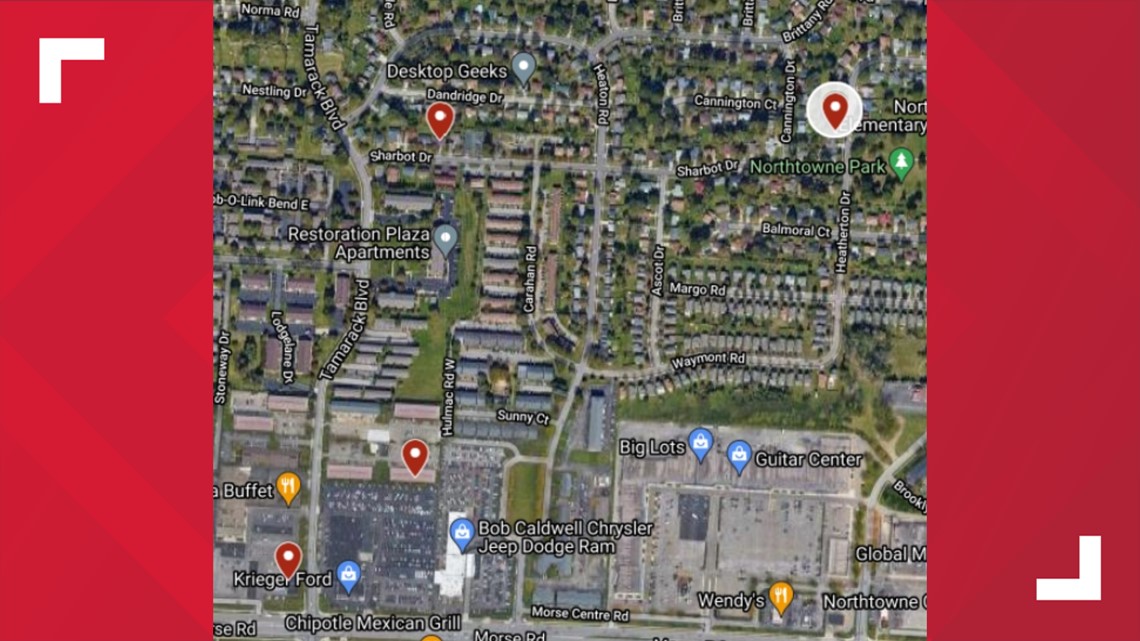
The above map shows an area of Columbus just north of Morse Road and south of Tamarack Circle. This area also hosts four unsolved murders – including the shooting death of 15-year old Dawuan Lewis-Taylor.

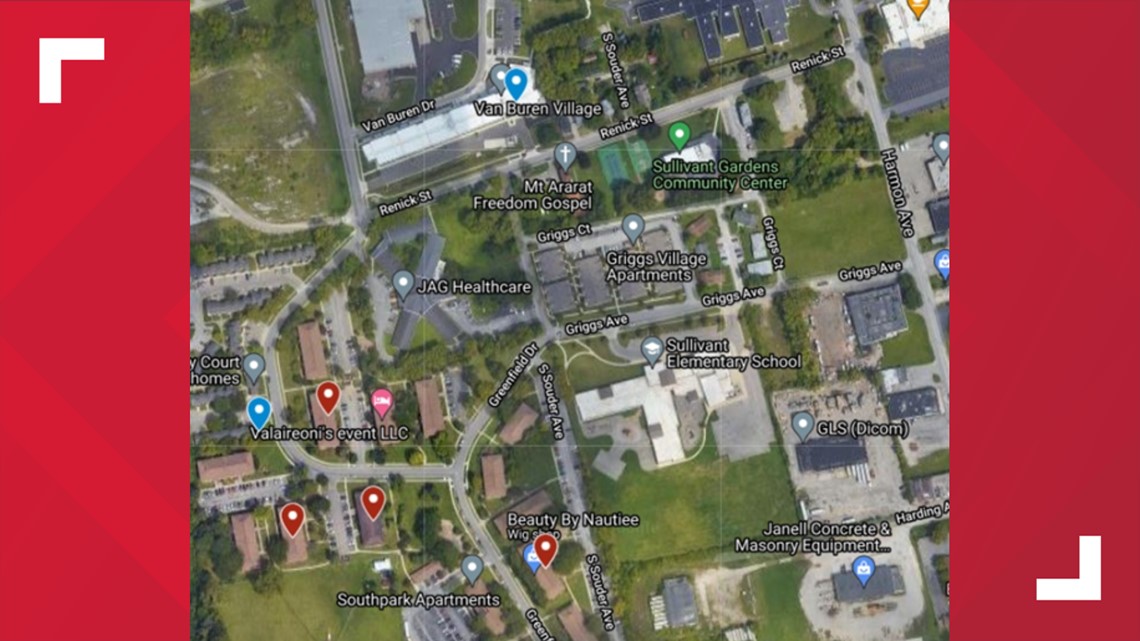
The above map shows an apartment complex just south of the I-71/I-70 split. The apartment complex is also home to four unsolved murders.

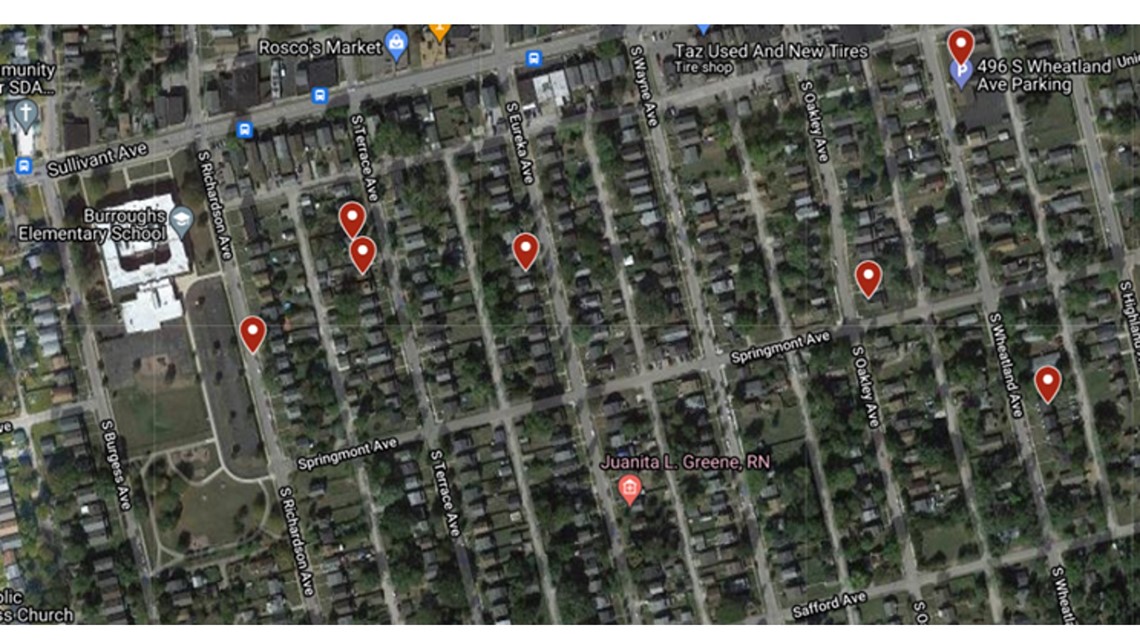
The above section of the map shows the Hilltop area of Columbus where killings remain unsolved
“They are scared to say things”
In the Hilltop, 10 Investigates found at least a half dozen unsolved murders that stretch from Richardson Avenue and further east to Highland Avenue and beyond.
Brenda Johnson’s son, James, is among these deaths.
He was shot at a Sunoco gas station on Sullivant Avenue and later died on October 20, 2020.
There have been no arrests in his murder.
In an interview with 10 Investigates, Johnson was guarded in what she revealed but said she believes there are people out there in the community who have information about who is responsible for her son’s death, but aren’t coming forward.
“It’s painful. I’m angry. Very angry,” she said.


Police released a surveillance image from the night of the shooting.
The suspects have been described as two men and possibly a female driver leaving the gas station in a maroon and gold minivan.
When asked what role she thought the street code of “no snitching” played in her son’s case, Johnson said: “It’s a big factor.”
Nine months later, Brenda’s family was struck by tragedy again.
James Johnson’s cousin, Ashley Sweeney, was found dumped in an alleyway in the Hilltop off Terrace Avenue.
A scrapper collecting items found her in the alleyway and called 911.
Ashley’s mother, Tina Griffey, told 10 Investigates that she too believes a street code of “no snitching” is part of what plagues homicides from being solved.
Griffey said her family has heard rumors about who might have been responsible, but with no arrests five months after her killing – they are left to wonder.
“I think they keep this thing all to their selves, the women and all those people who don’t say things. They are scared to say things,” Tina Griffey said.
Her family acknowledged to 10 Investigates that Ashley had lived a rough life. A check of municipal court records shows a string of minor criminal charges dating back years – drug addiction and prostitution, her family says, were also part of her background. Her cousin, Maria Sweeney, said Ashley had stopped working the streets several years ago and temporarily got sober. But she relapsed within the past year.
Tina said Ashley kept them sheltered from many of the details of her life. Tina said she thinks it was in part to protect her family from the people she surrounded herself with.
“The week she got murdered we were supposed to go camping,” said her niece, Shaeyla Littler, choking back tears.


Other families of murder victims interviewed by 10 Investigates said that they too believed a street code of silence is hampering the arrests of suspects.
“We are killing our own”
On an afternoon in late September, Litt Howard Jr. stood over his grandson’s grave.
“We are killing our own. We are killing our own,” said Litt Howard Jr.
Howard’s grandson, Dawuan Lewis-Taylor, 15, was gunned down outside of a home just north of Morse Road in September of 2020.
In the weeks the preceded his death, Dawaun had run away from a behavioral treatment program at Maryhaven.
His grandmother, Toni Howard, said Dawaun would call her to check in but wouldn’t tell her who he was staying with – except that he was with friends on the north side. They didn’t know where he was staying until he was shot and – even now – they don’t know who is responsible for his killing.
“There’s a whole lot that know stuff with Dawaun or anyone else,” Toni Howard said. “I don’t know if it is so much fear or people’s alliance to the streets, you know.”
10 Investigates attempted to talk to neighbors in the area where Dawaun was shot and killed. There was no answer at the doors in closest proximity to where he was killed.
Spray paint is on the sidewalk. It reads “RIP Lil Waun.”

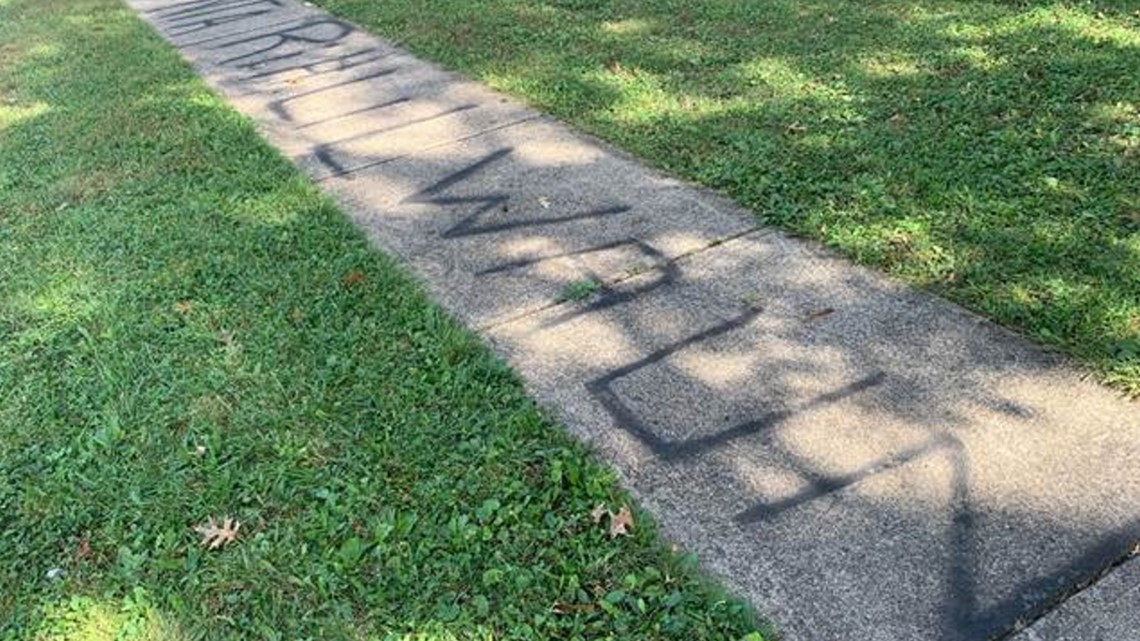
Other families we interviewed asked not to appear on camera.
Some spoke on the phone acknowledging their frustrations with police or the lack of cooperation from citizens.

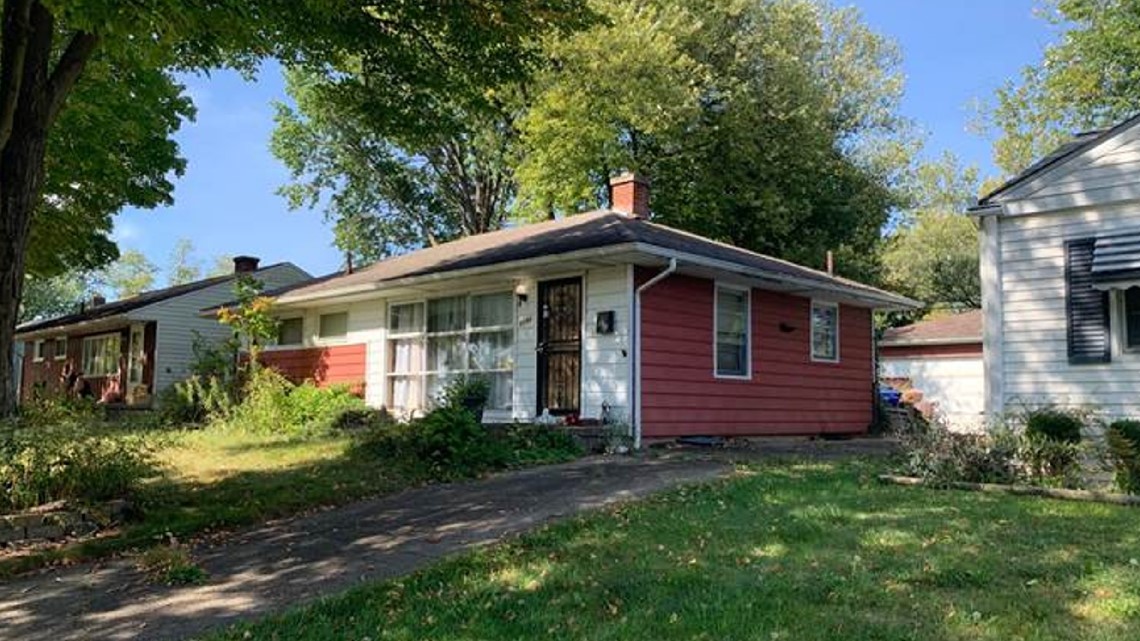
One mother agreed to be interviewed, but only if we concealed identity out of fear the people responsible for shooting and killing her son are still out there.
When we asked her why she was afraid, she said:
“I don’t feel safe because how do I know they don’t want me dead or my whole family dead?”
Her son, Desmond Johnson, was shot and killed in a car in September 2019.
Police have not made any arrests.
A Black overrepresentation
Since 2017, nearly two-thirds of all murder victims in Columbus have been Black – an overrepresentation of Black victims in a county that is two-thirds white.
“I hate to say that certain people or certain entities feel as if that’s one less black person. I have heard that before,” said Ray Reggins who spoke to 10 Investigates.
Reggins and her friend, Tylisha Reed, told 10 Investigates that they’ve been upset by the shooting death of their friend, Sade Payne, who was found shot outside of a home on Maize Road in April.
“And for someone to take someone who is so near and dear to us – because she was there for me when my brother died. She was there multiple times,” Reggins said.
Both Reggins and Reed tell me they’ve lost loved ones to gun violence – including cases that remain unsolved to this day.
“Give us a chance”
10 Investigates took our findings to the Columbus Division of Police where we spoke with homicide commander Robert Strausbaugh.
Strausbaugh said that our findings appear to mirror the same problems that have plagued neighborhoods and police for years.
“I do not care what that victim was doing at the time they were murdered. They were murdered. If the person who murdered them is allowed to remain out on the streets and they are allowed to get away with murder,” he said.
While “no snitching” proves to be problematic for both the families of murder victims and for police – Strausbaugh says equally as troubling is the mistrust of police and retaliatory killings – or “street justice” where people made about one killing will go out and cause another. Those three things combined, Strausbaugh said, are the major issues that serve as roadblocks for his detectives, who are working to clear cases.
His message to those in the community:
“I would say give us a chance. If you want to put anything on the news or in your story, gives us a chance. Give us a chance with good evidence. Give us a chance to put whoever killed your loved one or anyone in your community in front of a judge … and if they are guilty to go to prison,” he said.
In a year where Columbus is approaching a record-setting year for deadly violence, the city appears to be a living embodiment that silence begets more violence.
If you have information about a crime or murder, you are urged to call Crime Stoppers at 614-461-TIPS (8477).
If you have something that you’d like 10 Investigates to investigate, please email Chief Investigative Reporter Bennett Haeberle at 10investigates@10tv.com.


